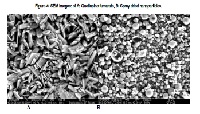Formulation development, In-vitro and In-vivo evaluation of novel solid oral dosage form containing Quetiapine nanoparticles.
Keywords:
Quetiapine Fumarate, Nanoparticles, high pressure homogenization, Particle sizeAbstract
Poorly water soluble drugs such as quetiapine fumarate (QF) offer challenges in developing a solid dosage form such as tablets with adequate bioavailability. The objective of the present work is to develop a solid dosage form for quetiapine nanoparticles in order to increase the saturation solubility, rate of dissolution so that the oral bioavailability is enhanced. Quetiapine fumarate is a BCS class II drug, hence its oral bioavailability is dissolution limited. To enhance the oral bioavailability a nanoparticle formulation of QF was prepared by using high pressure homogenization. The nanosuspension prepared was converted into dry powder by using spray drying. The nanosuspension and spray dried nanoparticles are characterized for particle size, polydispersity index, zeta potential, saturation solubility, drug content, dissolution rate, solid state characterization such as X-ray diffraction(XRD), Differential scanning calorimetry(DSC), infrared(IR), scanning electron microscopy(SEM), transmission electron microscopy(TEM). The spray dried nanoparticles were blended with excipients to convert into solid dosage form such as tablets. The compressed tablets were evaluated for physical parameters,assay anddissolution was compared with the commercial QF formulation. Solid state characterization data showed loss of drug crystallinity after homogenization. The novel dosage form has shown significant increase in the rate of dissolution when compared to microparticle formulation in discriminating medium. In-vivo studies have shown that the rate and extent of absorption of nanoparticle formulation was significantly high when compared to its microparticleformulation when administered in rats.
References
. Arunkumar N, Deecaraman, M, Rani, C. Nanosuspension technology and its applications in drug delivery. Asian Journal of Pharmaceutics. 2009, Vol. 3 Issue 3, p168-173. 6p.
. Rajesh Singh Tomar, Prateek Chittodiya, Dr. Shikha Agrawal, Pankaj Bahrani;
Solubility Enhancement by Solid Dispersion - A Review International Journal of Pharmaceutical & Biological Archives 2013; 4(4): 623 – 631.
. G.L. Amidon, H. Lennernas, V.P. Shah, et al, A theoretical basis for a biopharmaceutic drug classification: the correlation of in vitro drug product dissolution and in vivo bioavailability; Pharm Res, 12 (1995), pp. 413–420
. Prakash Khadka, Jieun Ro; Hyeongmin Kim et al Pharmaceutical particle technologies: An approach to improve drug solubility, dissolution and bioavailability, Asian Journal of Pharmaceutical Sciences; Volume 9, Issue 6, December 2014, Pages 304–316
. J. Hu, K.P. Johnston, R.O. Williams; Nanoparticle engineering processes for enhancing the dissolution rates of poorly water soluble drugs; Drug Dev Ind Pharm, 30 (2004), pp. 233–245
. Horn D, Rieger J (2001) Organic nanoparticles in the aqueous phase-theory, experiment, and use. Angew Chem Int Ed 40:4330–61.
. Muller RH, Jacobs C, Kayser O (2001) Nanosuspensions as particulate drug formulations in therapy: rationale for development and what we can expect in the future. Adv Drug Delivery Rev 47:3–19.
. Rabinow BE, (2004) Nanosuspensions in drug delivery. Nat Reviews: Drug Delivery 3:785–96.
. Merisko-Liversidge E, Liversidge GG, Cooper ER; (2004) Nanosizing: a formulation approach for poorly water-soluble compounds. Eur J Pharm Sci 18:113–20.
. Liedtke S, Wissing S, Muller RH, Mader K(2000) Influence of high pressure homogenization equipment on nanodispersions characteristics. Int J Pharm 160:229–37.
Keck CM, Muller RH(2006) Drug nanocrystals of poorly soluble drugs produced by high pressure homogenization. Eur J Pharm Biopharm 62:3–16.
. Pace S, Pace GW, Parikh I, Mishra A (1999) Novel injectable formulations of insoluble drugs. Pharm Tech 23:116–34
. Liversidge G, Cundy K (1995) Particle size reduction for improvement of oral bioavailability of hydrophobic drugs: I. Absolute oral bioavailability of nanocrystalline danazol in beagle dogs. Int J Pharm 125:91–7.
. D.R. Paula, 1, , L.M. Robeson; Polymer nanotechnology: Nanocomposites; Polymer 49 (2008) 3187–3204.
. Keck, C.M., Müller, R.H., 2006. Drug nanocrystals of poorly soluble drugs produced by high pressure homogenization. Eur. J. Pharm. Biopharm. 62, 3–16.
. Chaubal MV1, Popescu C. Conversion of nanosuspensions into dry powders by spray drying: a case study, Pharm Res. 2008 Oct; 25(10):2302-8.
. Bhardwaj V, Hariharan S, Bala I, Lamprecht A, Kumar R. Pharmaceutical aspects of polymeric nanoparticles for oral delivery. J Biomed Nanotech, 1, 2005, 235-258.
. Goren JL, Levin GM. Quetiapine, an atypical antipsychotic. Pharmacotherapy 1998; 18 (6):1183-94.
. Muller RH, Jacobs C. Production and characterization of a budesonide nanosuspension for pulmonary administration. Pharm Res 2002; 19:189–94
Yang JZ, Young AL, Chiang PC, Thurston A, Pretzer DK. Fluticasone and budesonide nanosuspensions for pulmonary delivery: Preparation, characterization, and pharmacokinetic studies. J Pharm Sci 2008; 97:4869–78.
Liang YC, Binner JG. Effect of triblock copolymer non-ionic surfactants on the rheology of 3 mol% yttria stabilised zirconia nanosuspensions. Ceram Int. 2008; 34(2):293–7.
. Muller RH, Grau MJ. Increase of dissolution rate and solubility of poorly water soluble drugs as nanosuspension. Proceedings. World Meeting APGI/APV, Paris, 1998; 2:62–624






